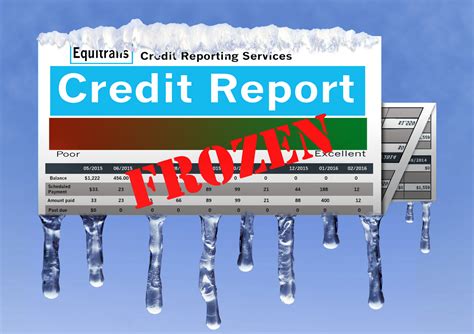How to Put a Freeze on Your Credit: Protecting Yourself from Identity Theft
Identity theft is a serious concern, and one of the best ways to protect yourself is by placing a security freeze on your credit reports. This prevents creditors from accessing your credit information without your explicit permission, making it significantly harder for fraudsters to open new accounts in your name. This comprehensive guide will walk you through the process step-by-step.
Understanding Credit Freezes
A credit freeze, also known as a security freeze, is a powerful tool that restricts access to your credit reports from creditors and other third parties. This means that anyone attempting to open a new account or obtain a loan in your name will be denied because they can't access your credit information. It's different from a credit lock, which is a service offered by credit bureaus or third-party companies. A credit freeze is a free service provided by the credit bureaus themselves.
Key Benefits of a Credit Freeze:
- Strong Protection Against Identity Theft: This is the primary benefit. A freeze makes it nearly impossible for someone to open new accounts using your stolen information.
- It's Free: All three major credit bureaus (Equifax, Experian, and TransUnion) are required to offer security freezes at no cost.
- Easy to Lift: You can temporarily lift the freeze when you need to apply for credit, and then re-freeze it afterward.
- Peace of Mind: Knowing your credit is protected provides significant peace of mind.
How to Freeze Your Credit with the Three Major Bureaus
The process is similar across all three major credit bureaus, but there might be slight variations. Always visit the official website of each bureau to ensure you have the most up-to-date information.
1. Freezing Your Credit with Equifax:
- Visit: The Equifax website's security freeze page.
- Create an Account (or Log In): You'll likely need to create an account or log in using your existing one. This adds an extra layer of security.
- Follow the On-Screen Instructions: The process is straightforward and involves providing personal information to verify your identity.
- Choose a PIN or Password: This is essential for managing your freeze later.
2. Freezing Your Credit with Experian:
- Visit: The Experian website's security freeze page.
- Create an Account (or Log In): Similar to Equifax, you'll need to create or access your existing account.
- Follow the On-Screen Instructions: Provide the necessary information for verification.
- Choose a PIN or Password: This secures your freeze settings.
3. Freezing Your Credit with TransUnion:
- Visit: The TransUnion website's security freeze page.
- Create an Account (or Log In): Again, account creation or login is usually required.
- Follow the On-Screen Instructions: Provide personal information to confirm your identity.
- Choose a PIN or Password: This protects your freeze status.
Lifting Your Credit Freeze Temporarily or Permanently
When you need to apply for credit, you can temporarily lift the freeze with each bureau. This is usually done online and involves providing your PIN or password. Remember to re-freeze your credit after your application is complete. To permanently unfreeze your credit, you'll also follow the instructions provided on each bureau's website.
Protecting Your Credit: Beyond the Freeze
While a credit freeze is an excellent protective measure, it's crucial to practice other good credit habits:
- Monitor your credit reports regularly: Check your credit reports from all three bureaus annually for any suspicious activity. You can access free credit reports at AnnualCreditReport.com.
- Review your bank and credit card statements: Look for any unfamiliar charges or transactions.
- Use strong passwords and unique usernames: Protect your online accounts with robust security measures.
By following these steps and adopting proactive habits, you can significantly reduce your risk of identity theft and safeguard your financial well-being. Remember, a credit freeze is just one part of a comprehensive identity theft prevention strategy.
